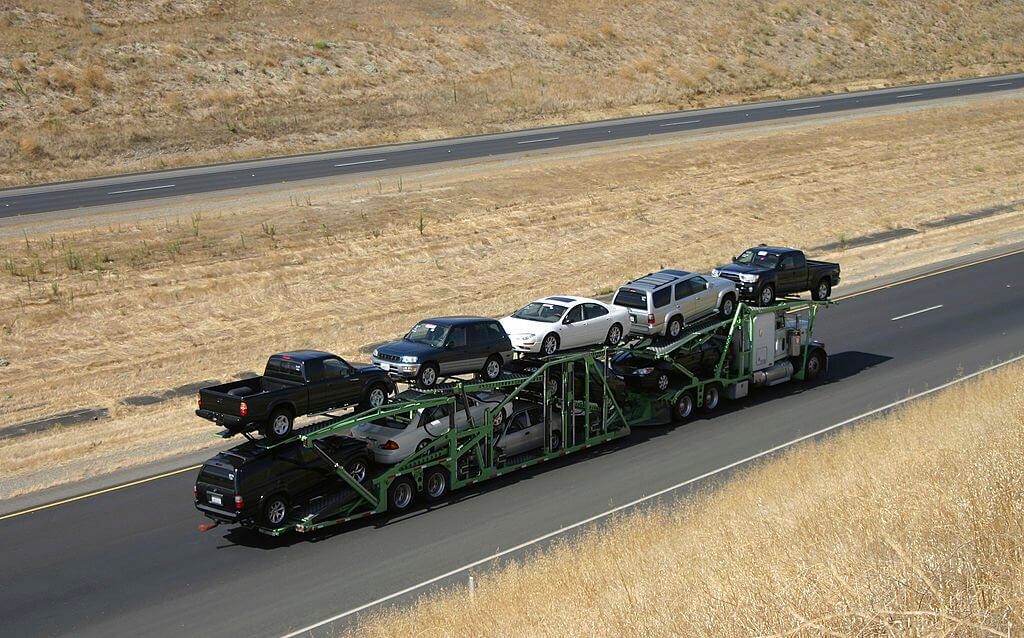Relocating for military service often necessitates transporting personal belongings, including vehicles, across state lines. This daunting task demands meticulous planning and execution. This comprehensive guide empowers you to navigate the intricate process seamlessly, ensuring your cherished automobile arrives safely at your new duty station.
Understanding the Essence of Military Vehicle Shipping
Embarking on a new military assignment frequently entails cross-country relocation. Transporting your vehicle becomes a paramount concern, as it symbolizes independence and familiarity amidst the upheaval of transition. The government acknowledges this need and offers specialized support to alleviate the burden on service members Ship A Vehicle From State To State.
Eligibility Criteria: Determining Your Qualifications
Before delving into the logistics, it’s crucial to ascertain your eligibility for military vehicle shipping assistance. Generally, active-duty personnel, reservists, and specific Department of Defense civilians qualify for this benefit when executing a Permanent Change of Station (PCS) move.
| Eligible Personnel | Requirements |
| Active-Duty Military | PCS orders, valid military ID |
| Reservists | PCS orders, valid military ID, active reserve status |
| DoD Civilians | PCS orders, valid employment verification |
Initiating the Process: Navigating the Paperwork
Kickstarting the vehicle shipping process begins with meticulously completing the necessary documentation. Your relocation orders serve as the cornerstone, providing vital information about your new duty station and timeline. Consult with your Transportation Office to ensure you have all the requisite paperwork in order.
- Obtain a copy of your PCS orders
- Gather vehicle registration and proof of ownership
- Procure a valid military ID or employment verification
- Complete the Department of Defense Form 1164 (Vehicle Shipping Application)
Choosing the Right Transportation Method: Weighing Your Options
Once your eligibility is confirmed, you’ll need to select the most suitable transportation method for your vehicle. The military offers two primary options: the Defense Transportation System (DTS) or a privately owned vehicle (POV) shipment reimbursement.
Option 1: Defense Transportation System (DTS)
The DTS is a government-managed service that facilitates the transportation of your vehicle. This option is often preferred for its convenience and cost-effectiveness. The process typically involves:
- Scheduling a pickup date with the Transportation Office
- Preparing your vehicle for shipment (cleaning, removing personal items)
- Delivering your vehicle to the designated pickup location
- Awaiting your vehicle’s arrival at your new duty station
Option 2: Privately Owned Vehicle (POV) Shipment Reimbursement
If you prefer to arrange the transportation yourself, you can opt for the POV shipment reimbursement. This method allows you to choose a reputable commercial carrier and receive reimbursement for the associated costs, subject to certain limitations.
- Obtain quotes from licensed and insured carriers
- Submit cost estimates to the Transportation Office for approval
- Arrange for pickup and delivery with the chosen carrier
- Submit receipts and documentation for reimbursement
Preparing Your Vehicle for the Journey
Regardless of the transportation method chosen, properly preparing your vehicle is essential to ensure its safe arrival. Follow these steps diligently:
- Thoroughly clean the interior and exterior
- Remove personal items and loose objects
- Disable alarms and anti-theft devices
- Ensure sufficient fuel for loading and unloading (approximately 1/4 tank)
- Provide extra sets of keys to the carrier
- Document existing dents, scratches, or damages
Tracking and Receiving Your Vehicle
Once your vehicle is en route, you can monitor its progress through the designated tracking system provided by the carrier or the Transportation Office. Upon arrival at your new duty station, meticulously inspect your vehicle for any potential damages or discrepancies.
- Utilize the provided tracking tools
- Conduct a thorough inspection upon delivery
- Document any new damages or issues
- Report any concerns promptly to the appropriate authorities
Embracing the Challenges: Tips for a Smooth Transition
While the process of shipping a vehicle as a military personnel may seem daunting, adhering to these tips can help ensure a seamless and stress-free experience:
- Plan well in advance to avoid last-minute rushes
- Familiarize yourself with the relevant regulations and policies
- Maintain open communication with the Transportation Office
- Be patient and flexible, as delays can occur
- Consider additional insurance for added protection
Seeking Professional Assistance: When to Consult Experts
In certain scenarios, seeking guidance from professionals can be invaluable. If you encounter complex situations or have specific concerns, don’t hesitate to consult with experts in the field:
- Transportation Office personnel for guidance on regulations and procedures
- Experienced commercial carriers for specialized vehicle shipping services
- Legal advisors for assistance with contracts or disputes
Embracing the Journey: A Seamless Transition Awaits
Shipping a vehicle as a military personnel is a multifaceted process, but with proper planning and execution, it can be a seamless experience. By leveraging the resources provided by the military and adhering to best practices, you can ensure your cherished automobile arrives safely at your new duty station, allowing you to embrace the next chapter of your service with confidence and ease. Shipping Auto

